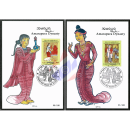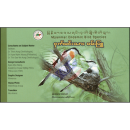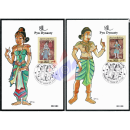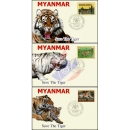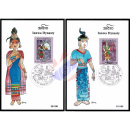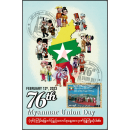Description
Opr. (10x5); A = perf. K 14 1/4:14; B = imperforate
Maximum Cards, date of issue: 02.03.2022
Picture descriptions:
mc) Female costume of the Konbaung Period
md) Men's costume of the Konbaung Period
531 A 200 K multicolored mc
532 A 200 K multicolored md
Quantity MC: 100 pieces
Designer: Prof. Myat Tun Aung, Aung Than Htay
Printer: Government Security Printing Works (SPW), Rangoon
Conservation Status:
Here as a 2-part set Maximum Cards, MC(I), with perforate Set and first day special postmark
Issue Notice:
- The Konbaung period was the last dynasty of the Burmese Empire, achieved the second largest extent of Burmese sphere of influence in Southeast Asia, and ruled between 1752 and 1885.
- The Konbaung Dynasty came from the small town of Moksobo, now Shwebo in Upper Burma.
- It was founded by regional prince Aung Zeya, later King Alaungpaya, after the Taungu dynasty lost control of Burma and the Hanthawaddy (Pegu) kingdom, resurrected in 1740, attempted to expand north. The Konbaung king Alaungpaya unified Burma after destroying Pegu in 1758.
- Alaungpaya's successors resided from 1760 to 1765 in the old upper Burmese royal city of Sagaing, from 1765 in Ava (today's Inwa).
-
Her dynasty built a highly militarized society that would become the largest Burmese empire after that of Taungu under King Bayinnaung.
The Konbaung dynasty ended on November 29, 1885, after the rest of the empire was fully integrated into the British colonial empire as a result of the Third Anglo-Burmese War. - Locals adorned themselves with gold and silver, including gemstone rings, necklaces, bracelets and anklets. These accessories accompanied traditional clothing consisting of a sarong-like wrap - paso for men or htamein for women - both made of cotton or silk. Wooden or leather sandals were worn as shoes. Men and women in their finest attire, including decorated jackets, for visits to pagodas and other important events.

